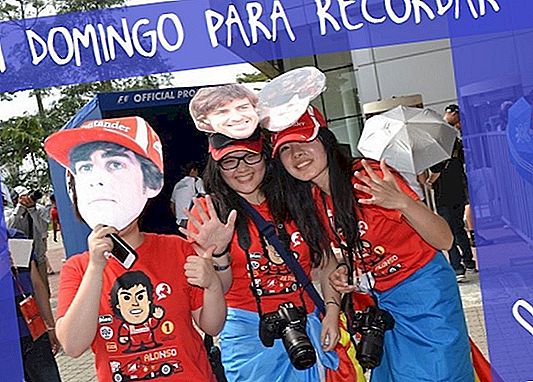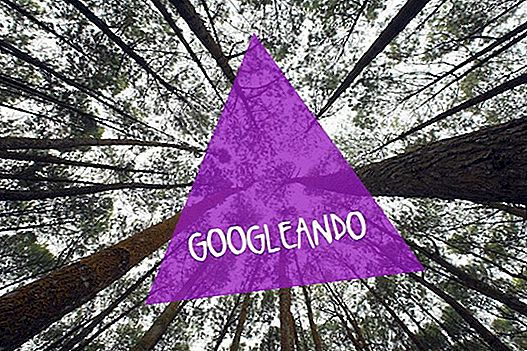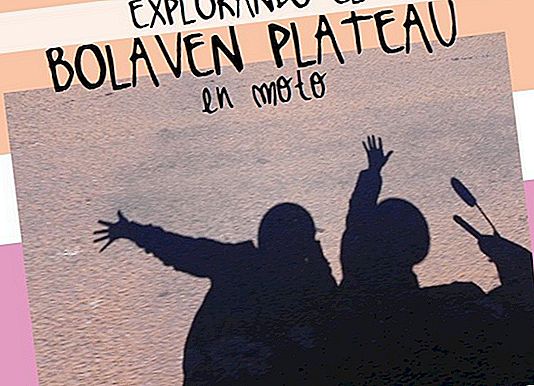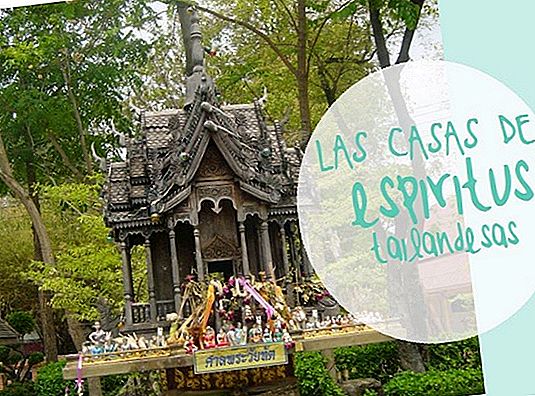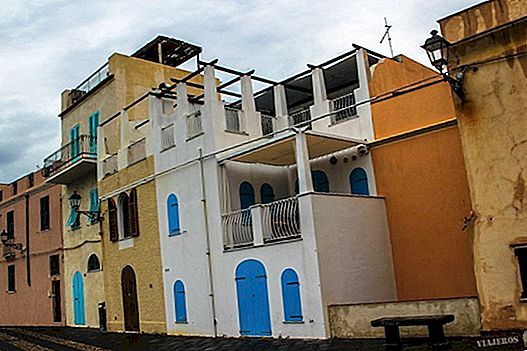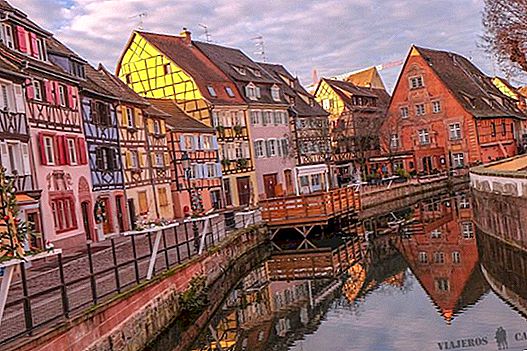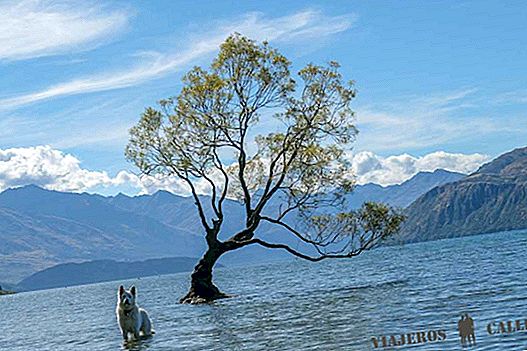Day 24: Easter Island: Sunrise in Ahu Tongariki, Hanga Piko, Ahu Huri A Urenga, Ahu Te Pito Kura, Petroglyphs Papa Vaka, Pu O Hiro, Tongariki and Rano Raraku
Today is one more special day of this trip to Chile and Easter Island and we are going to see the sunrise in Ahu Tongariki, one of the most spectacular places on Easter Island, which we are looking forward to and more after knowing that this is one of the most impressive places to live this moment of the day.
The sunrise is approximately at 7:30 in the morning, but the ideal is to be approximately one hour before to start seeing the first lights of the sun. From the Hangaroa Eco Village Spa, where we stay the 8 days that we will be in Easter Island we are approximately 20 kilometers from Ahu Tangariki and about 30 minutes, since it is necessary to take into account that it is not the same to drive at night than during the day, and less for a place you've never been through. We have to say that the state of the road, although it is good, there are many potholes so it is worth having a few extra minutes, especially if you come to see the sunrise and have about 30-45 minutes to arrive from Hanga Roa to Ahu Tongariki.
We have left the hotel when it is 6:30 in the morning, so we got to see the sunrise in Ahu Tongariki when it is 6:55 minutes, a somewhat late hour, since they have already begun to see the first shadows, so we recommend you go out a little earlier, to enjoy the show to the fullest.
If you don't have a car, a good option is to book this excursion to Ahu Tongariki at sunrise or this Easter Island tour that includes Ahu Tongariki, Rano Raraku and Anakena Beach with a guide in Spanish.
Upon arrival we find several cars that are already parked in the parking lot directly in front, so we park, show our ticket at the entrance and find ourselves facing a huge esplanade, in which we can only intuit the shadow of several people and very slightly the 15 most famous moas of Easter Island, waiting for the sunrise.
Sunrise in Ahu Tongariki
From this moment it is quite difficult to explain in words what we have experienced and felt during the next hour or so. It has been a mixture of feelings, which make you be in absolute silence, minute after minute, looking only in front and with the only background sound of cicadas and the sea, which are the perfect tune for one of the most impressive sunrises We have been fortunate to enjoy the trips we have made, not to mention the most.

Sunrise in Ahu Tongariki
Embobados looking at the horizon, every second that passes we are more aware of being in one of the most impressive and magical places in the world and that with each second, the light is changing and giving us images totally different from those experienced, making us let's look in the shadows and ask ourselves what moment has been the most impressive of those lived, without being able to stay with only one. This is Easter Island, and this is its true magic.

Sunrise in Ahu Tongariki

Sunrise in Ahu Tongariki

Sunrise in Ahu Tongariki
We could put hundreds of images, and we do not exaggerate, of sunrise in Ahu Tongariki and all of them would be different, since as we commented previously, with each second the views change in an amazing way, leaving you a new image, even more incredible than the previous one.

Panoramic sunrise in Ahu Tongariki
Tips to see the sunrise in Ahu Tongariki
Although there are things that may seem obvious, after our experience, we would like to leave some tips to enjoy a sunrise in Ahu Tongariki only:
- Although the days on Easter Island are hot, it is not the same temperature when the sun is already high than at dawn. We recommend that you wear a jacket, since it is cool, although not cold.
- In Ahu Tongariki there is no infrastructure in which to drink or eat. If you do not want to return to Hanga Roa for breakfast, you can consider bringing something to eat and when it is dawn, have a small picnic in the area. We assure you that you will not find better views than these. Of course, you must be very careful and not leave any food or waste.
- Be polite and respectful: everyone wants to take pictures, so don't put your camera on a tripod in the front, making it appear in the photo of all visitors.
If you want to take a picture with the sunrise, try to make it fast, since normally everyone is taking pictures and wants to capture every moment, either with the camera or the retina.
- Now they are very fashionable time-lapse, we understand that you want to do it, but try to put yourself at an angle where you do not bother, not to be 1 hour going out in the photos of everyone.
- Ahu Tongariki is very large, so although there are many people, you will always find an area where you can be alone, in different angles without disturbing and without being disturbed.
- Above all, don't speak loudly or loudly, that's why there are other places.
- If you want to get close to the moais do it, but try to do it when the sun has already risen at all and when most people are not taking pictures.
- Yes after sunrise in Ahu Tongariki You want to enjoy the place, visit it and be alone, you just have to wait at approximately 8:15, which is the time when the sun is already up, people start to leave and there is no one left in the enclosure. In addition the organized groups arrive around 10 in the morning, so you will have practically two hours to enjoy it alone.

Sunrise in Ahu Tongariki
Ahu Tongariki
After enjoying a unique sunrise, we begin the visit itself to Ahu Tongariki.
As the book says "Discovering Easter Island": "There is no superlative enough to describe the first impression one has of Ahu Tongariki, with its infinite platform and its 15 colossal moáis".
With this phrase we believe that the sensation and feelings of being in this place for the first time and facing one of the most incredible places in the world are perfectly summed up.
With 220 meters from one end to the other, Ahu Tongariki is considered one of the largest ceremonial structures in Polynesia.
To start the visit, we recommend you return to the entrance area, to see on the left, 7 headdresses that, being so damaged, could not be placed on the moai when they were restored.

Ahu Tongariki headdresses
In the middle of the square you can see a moi on his back, which may appear to have belonged at some time to the platform of the 15 moai. But if you approach you will see that it does not have the eye socket carved, so through this we can know that it was never part of any platform.
From studies it is believed that it probably broke during transport from the quarry, which can be seen behind the back, and they left it lying here, where we can see it right now.

Moái in Ahu Tongariki
In Ahu Tongariki there are several interesting petroglyphs, although we have read that the best time to observe them is before sunset, so it is clear that we will return here at some other time, we leave these for later.
Once you are in the area of the moi that lies on your back, we recommend that you move away from the platform a bit, to have a wider perspective and enjoy the views. We assure you that they are excellent and although it seems a lie, although it is in the same place, we are sure that you will not cross with anyone and it is that most people only stay around the platform, take some photos and leave . A pity if we consider that Ahu Tongariki is one of the most representative and important places of Easter Island.

Ahu Tongariki
Another of the things that we recommend is to go through the back of the platform, something that will allow you to see the moai much more closely, in addition to having a much more detailed view of both these and the platform.

Ahu Tongariki
After doing this tour of Ahu Tongariki, we see that it is 9 in the morning, having been between sunrise and visit for about 2 hours, enough time to fully enjoy the place, taking it with great tranquility.
When we are about to leave we find the moii traveler, a really spectacular moi that we did not see when we arrived, since being all dark was not even minimally noticeable at the entrance.
Moái traveler in Ahu Tongariki
In 1960, a 9.5-degree earthquake on the Richter scale took place in Chile, in Valdivia, the largest ever recorded. This earthquake caused thousands of deaths in addition to a tsunami that caused flooding throughout the region, registering waves of more than 11 meters (higher than the moa of Ahu Tongariki). This tsunami also reached the shores of Easter Island, so Ahu Tongariki, which is on the east coast, received the impact, falling the moai that were still on the platform at that time and further deteriorating those that were fallen .
The restoration was carried out thanks to the Japanese government and a private construction company, also Japanese, that were involved in the project restoring what the tsunami had taken.
In 1982, the moai that is now at the entrance of Ahu Tongariki was sent on a ship to Japan, to be exhibited at the industrial fair in Osaka and Tokyo.
When the Moi returned to Easter Island, the Rapa Nui began calling him the moii traveler, a name we have to say, we love it.

Moái traveler
A few minutes past 9:00 in the morning, when we finish the visit and seeing the time we have, since we have tried to condense everything we had planned to do today and tomorrow today, since the forecast is It rains the next few days, we see that it is very soon, so we decided that being only 20 minutes from the hotel we can approach and thus have breakfast and charge energy for the rest of the day.
We arrive at the Hangaroa Eco Village Spa at 9:20 and go straight to breakfast at the Poevara Restaurant, where we find a really spectacular buffet breakfast, with all kinds of sweets, breads, sausages ... etc. with which we renew energies after the early morning today , to see one of the most amazing shows in the world.

Breakfast at the Poevara Restaurant
After breakfast, in which we include a couple of extra coffees, we start again to start the visits we have scheduled for today, which will take us to the north and east of Easter Island.
North and East Route Easter Island
As we said yesterday, in Easter Island it is best to make the most of the time, especially when the sun is on your side, since the tropical climate of the island causes periods of rain that can sometimes last for days.
In our case and seeing that today is still sunny, but that the forecast for the next few days is not as encouraging, we decided today to propose an itinerary as complete as possible, to take us through the places that we have most interest in Isla Easter, to meet them and visit them in good weather.
This tour, after seeing the sunrise in Ahu Tongariki, will take us through Hanga Piko, Ahu Huri A Urenga (on the map like Pia Taro), Ahu Te Piyo Kura, Petroglyphs Papa Vaka, Pu O Hiro, Tongariki (visit again in the afternoon) and Rano Raraku.
The first stop is in Hanga Piko, where we were the first day we arrived at Easter Island at night and where we wanted to return to enjoy it and meet it in the light of day.

Hanga Piko
In this small bay we also find a moái, Ahu Riata, which was restored in 1998 and that deserves a visit, especially being so close to Hanga Roa.

Hanga Piko and Ahu Riata in the background
After being in this area for about 15 minutes, enjoying the tranquility of the place, we return to the car and we make our way to Ahu Huri A Urenga, located just 5 kilometers from here and which is marked on the map that we previously put as "Pia Taro".
Ahu Huri A Urenga
Although most moéis more important They are bordering the coast, we can find some moas inland that are very interesting and that we should not get lost in any Easter Island route.
An example is Ahu Huri A Urenga, one of the 25 platforms that are inside, and that is at least surprising.
Since it is not well marked, we recommend that you take an offline map, in case you have no connection or follow the following indications. You must leave Hanga Roa and take Anakena direction, once on the road, you will find a bar called "Pikano", after which you must turn left, for a few meters later you will meet Ahu Huri A Urenga.

Ahu Huri A Urenga entrance
This moái was restored by Mulloy and has a great peculiarity that makes it unique: having two pairs of hands also being located on a platform that was once a solar observatory. If we add to this that on June 21, the day of the winter soltice, the Moi looks just at sunrise, this place is at least curious.

Ahu Huri A Urenga
After being here practically 20 minutes, totally alone, enjoying the place, we return to the car, to travel a few meters on our steps to take the road to Anakena, another of the most important points of Easter Island.
From Ahu Huri to Urenga we are only 14 kilometers away, so at 11:30 in the morning we can say that we are already on one of the two beaches of Easter Island and one of the most incredible places on the island.
We park right in front, in one of the two enabled parkings, and after showing the access ticket to the Rapa Nui National Park, we only need one look to see that this will be one of "our places in the world".

Anakena from the parking lot
Anakena on Easter Island
According to the story of Rapa Nui, approximately 1300 years ago two canoes with animals and plants reached Anakena, with a group of Polynesians who landed in Anakena, one of the few suitable places on Easter Island for this purpose.
After colonizing this place, it became one of the most important points of the island, besides being, for the Miru, its religious center.

Anakena
Today Anakena is considered one of the best beaches in the world, we intuit that not as a beach itself, but because of the incredible place where it is located, surrounded even by palm trees, which were imported from Tahiti.

Stunning views of Anakena

Anakena
This is also one of the few places on Easter Island, outside Hanga Roa, where there are infrastructures such as bathrooms, a couple of small bars / restaurants where you can have a drink and eat and even a small shop, in the parking lot from the high zone.
Book the best rated Spanish tours and excursions in Easter Island by travelers:
- Tahai, Orongo and the Rano Kau volcano
- Easter Island and Anakena Beach Tour
- Offer: Ahu Akivi + Anakena + Orongo
- Excursion to Ahu Akivi
- Guided tour by Hanga Roa
In addition, among the palm trees, in the area on the left, it has a large picnic area in the shade, perfect for enjoying a meal in an idyllic setting, and a desktop that we are sure, you will never forget.

Panoramic Anakena
As we have explained the temperature of the water is over 25 degrees in winter and over 18 in winter, so we could say that practically throughout the year, Anakena is a unique place to stick a good dip. We will at least try, and it is that after being in such a wonder, impossible to resist.

Anakena Beach
Although what has really brought us here today, the forecast is to return some other day to enjoy the beach as such, they have been the three original platforms that are preserved and that represent one of the most impressive places on Easter Island, to the time that one of the most visited.
The most impressive of the three and also the best known is Ahu Nau Nau, which can be seen on the sand and was restored in 1978.
This is also where the white coral eye was found that is currently displayed in the Hanga Roa Museum, which we talked about the day we arrived at Easter Island.
Ahu Nau Nau

Ahu Nau Nau
As you get closer to the platform, they can be seen in much more detail as the carving of the eyes and the entire face are really spectacular, even being able to see perfectly the navel of the moi on the left.

Ahu Nau Nau

Ahu Nau Nau details
But try not to keep the front view, since you just have to surround the platform to see countless details such as the remains of two headdresses that could not be restored and several moi remains.

Touches in Anakena
Ahu Ature Huki
On the right side, somewhat higher than Ahu Nau Nau we find Ahu Ature Huki, a moái who is remembered as the first one who was standing on the island. This was due to the study of Thor Heyerdahl, who wanted to prove how the moáis stood up, putting it into practice with Ahu Ature Huki.çç

Ahu Ature Huki
Once you have made the visit to Anakena, we recommend that you retrace your steps, approaching the access area and place yourself on a small promontory before reaching the arena. From there you will have one of Anakena's most incredible perspectives, from which you can see Ahu Ature Huki, the beach, palm trees and Ahu Anu Anu.

Anakena

Panoramic Anakena
We have to say that from here we have an incredibly spectacular vision, with which the only thing the body asks of us is to sit on the floor, leave our backpacks and simply dedicate ourselves to enjoying the place, feeling infinitely grateful for being here. Something Easter Island will not stop reminding us day after day and minute after minute.

Anakena
When we realize, we see that it is 1 noon, and although in the Hangaroa Eco Village Spa we have the meals included, we do not want to miss the opportunity to make the most of the time we have in Anakena, so we decided to stay here at have a drink, to be able to squeeze this magical place to the fullest and more after having breakfast so late, since right now we are not hungry and returning to the hotel would be to miss a unique time here.
So we approached a small restaurant / bar in the upper part where we ordered a natural juice and a cola for 8000CLP, in addition to consulting an extensive menu of food, which we promise to try the next day we come to Anakena to enjoy of the beach.
A few minutes past 1:30 p.m. when we returned to the car to approach the ovahe beach only 1 kilometers from Anakena and where, as we have read, the sun rises until two in the afternoon, so this is the best time to visit it.
The idea of condensing the planned visits for the next two days today is allowing us to see everything in very good weather and also have another extra day in Easter Island to repeat again some of the points that we have already seen or Simply come to the beach and enjoy, something that after our experience, we believe it is the most successful.
We arrived at Ovaha at 1:45 and after parking, finding ourselves practically alone, we crossed a kind of wall, which will take us to the second beach of Easter Island.

Entrance to Ovahe
Ovahe
To get to Ovahe Beach you just have to follow the Anakena road and follow the dirt road that branches to the left. Once you have parked and crossed the wall, you must follow a kind of path, which runs parallel to the coast, from where in addition to having incredible views, it will lead you directly to Ovahe.

Ovahe road views
After about 10 minutes, you reach a rocky area, which you must cross to find yourself in front of this small cove, which we had read was much less crowded than Anakena, but at least after our experience, we believe that it is all On the contrary, perhaps partly because of the belief in this situation.
In our case we find an Ovahe with some people, while in Anakena we have been practically 99% of the time alone, something that makes us think that the next day we come, we will probably opt for Anakena to enjoy the beach.

Ovahe Beach

Ovahe
We are not here more than 15 minutes, and then return to take the same path that we have reached and return to the parking lot where after stretching our legs for a while, we are on our way to the next point of the route, which is located Only 5 minutes drive from here.
Ahu Te Pito Kura
This is another of the most important points of Easter Island, where we can see another of the emblems or icons of Rapa Nui. The first thing you see, after entering a platform, virtually intact, don a moi on the ground, position in which it was when it was shot down.

Pito Kura
Being here allows us to have a unique vision, that of the biggest moai that has ever been brought from Rano Raraku, the quarry of the moáis, and that has been climbed on a platform.
The moái is 10 meters high and has an approximate weight of 60 tons, which gives us an idea of the colossal measures that it should have when it was erected on the platform.
Following the path on the left hand side of the platform, we find what is one of the most mysterious places on Easter Island, the navel of the world.
Here we find a small stone wall, within which we can see a large round stone, around which there are another 4 smaller stones, which once served as a seat.

Pito Kura
Although initially doubted the origin of the stone, over time it has been shown that it comes from the island, since in a nearby area several more, very similar stones were discovered, although it is completely hand polished.
Having a high iron content, since it is a volcanic stone, it heats up easily, so it makes the compasses show somewhat behaviors rare when they approach
It's 14:30 in the afternoon, when we finish this visit and get on the way to the next point of the itinerary: the Papa Vaka Petroglyphs, which are only 1 kilometer from Ahu Te Piko Kura, where we arrive in a couple of minutes
Papa Vaka
Known for being the place where the largest petroglyph on the island is located, Papa Vaka is a really amazing place, which is recommended to visit before sunset, when the light is perfect to be able to see better the drawings engraved on the stones.
We had read that in the different platforms there are panels with explanations, since many of the engravings are not noticeable to the naked eye.

Papa Vaka
Although this is true, most panels are very deteriorated, so it is practically impossible to understand some of the explanations, although the drawings are more or less distinguished, so in that part, we can say that despite not to go at the optimal time for the light, we can see many of the engravings in the area, most related to the sea.

Papa Vaka
We visit Papa Vaka in about 20 minutes, ending the route of one of the days we had scheduled, so we have to start with the next scheduled day, moving back to Ahu Tongariki, where we cannot resist returning, since we want to take some photos at this time of day and where we really want to be able to sit quietly at this time and take a short break in one of the most incredible places on Easter Island.
Just a few meters ahead of Papa Vaka, we see that there is Pu or Hiro, a place that initially we had not planned, but how could it be otherwise and being here we took the opportunity to stop a few minutes and get to know this amazing place.
Pu O Hiro
This stone, located practically on the side of the road, shows us several petroglyphs related to fertility, in addition to having natural holes, for which, if blown by the upper end, it emits a trumpet sound, meaning of the name "Hiro's trumpet".
According to legend, this sound caused the fish to be attracted to the coast, and these could be fish much more easily.

Pu O Hiro
From here we follow the road to Ahu Tongariki, 7 kilometers from here, where we arrive when it is 3:30 p.m., a perfect time to enjoy the place almost alone, at this time of day, with a really incredible light.

Moái traveler in Ahu Tongariki

Ahu Tongariki
Having been here this morning, now we only have the need of sitting in front of this incredible wonder and being able to enjoy it without the haste we had this morning or the clock as a companion.
So with this premise, we sit on the floor, leave our backpacks to the side and spend more than an hour in front of one of the most magical places we have ever been.

Ahu Tongariki
If you have the opportunity to recommend that you come to this place at various times of the day, we assure you that you will not regret it and that it is an incredible place (had we said it already?), That will not cease to surprise you, whatever times you go .

Ahu Tongariki
It is 5 in the afternoon, when we finish the second visit to Ahu Tongariki, to go to another of the most important places on Easter Island: Rano Raraku, or the quarry of the moáis.
Once you get closer to Rano Raraku, we advise you to stop the car and look to your left, you will have stunning and impressive views of the quarry, from where you can see with perspective, the greatness of the place, in addition to what it means for Isla Easter

Views of the moáis in the Rano Raraku quarry
We have to say that for us, these views are one of the most incredible we remember of Easter Island, leaving us speechless even today.

Views of the moáis in the Rano Raraku quarry
We arrive at the Rano Raraku parking lot after a few minutes past 5 in the afternoon. After being in Ahu Tongariki for so long, with a heart attack, we asked at the bar at the entrance of Rano Raraku at what time the quarry closes at this time, so we can have a drink before making the visit. By telling us that they close at 8 in the afternoon, we take the opportunity to have a couple of soft drinks for 8000CLP before entering and so refresh ourselves before facing this last visit today, which with the sun it is doing and the heat, we It is proving somewhat strenuous, although truly incredible.
Getting ahead of what happened next, we will tell you that after entering a few minutes before 6 in the afternoon, and not taking more than 20 minutes in Rano Raraku, without having traveled even half of the quarry, a guard approaches us to say that in 30 minutes the enclosure is closed. We explained that at the bar they told us that it closed at 8 to what he kindly tells us that this is incorrect, checking it before going to the ticket office and that feeling it a lot can not do anything and that in 30 minutes we must leave Rano Raraku.
Given that the Easter Island ticket is valid for 10 days, we would not have had trouble returning another day, the problem is that the ticket only gives you the option to visit Rano Raraku and Orongo only once.
Before this, we have no choice but to try to make the visit as quickly as possible, to get at least a general idea, something we have to say annoys us a lot, and more considering that this is one of the most impressive places in the island, for later, at the time of departure, talk to the girl for a while, explaining what happened and after which, very kindly puts us a note on the ticket, which indicates that we can re-enter .
Moral: do not enter the sites without first checking the schedules.
Rano Raraku on Easter Island
We believe that there is nothing better than this phrase from Thor Heyerdahl "Rano Raraku remains one of the greatest and most enigmatic creations of humanity, a monument to those great unknown and lost men who preceded us ..." to head this brief explanation about Rano Raraku, one of the most incredible places in the world.

Rano Raraku quarry
Just present the ticket at the booth and after walking a few meters, you will see how the road forks in two directions, to the right, where you will go to the quarry proper and to the left, which is the path that takes you to the crater .
In our experience, it is best to go first to the right, to the quarry, then go to the crater (a visit that we will explain later, since as we mentioned earlier, today we could only make the visit to the quarry by the error in the schedules).
It is only necessary to follow the path a few meters to find us surrounded, on both sides, by unfinished mores, leaving us with an impressive view of this area.

Rano Raraku styling area
In this area of Rano Raraku we recommend you to look up a little, towards the high part, where you can see different holes in the rock, which is where the moai were carved and where they were taken.
Once this carving work was done, they separated from the rock and descended with the help of dirt ramps to the lower areas, where the path is now.
After arriving here, they went back down, this time to a prepared area, where they were hoisted, in order to have access to the moai back area. Once the work on the back was finished, the moi was ready to be transferred to its final location, through the roads of the moi, one of which we will have the good fortune to travel the next few days.

Rano Raraku
When time and circumstances caused the quarry to be abandoned, the land that was used in the ramps to bring down the moai was falling and was burying the moai that were in the lower part of the quarry, leaving us the vision that we have now, in which some moai only see their heads. Aunque debemos pensar que estos están completos, enterrados en tierra hasta la cintura, algo que ha servido para poder preservarlos de las inclemencias del tiempo y mantenerse como antaño.

Rano Raraku

Rano Raraku
En el sendero hay un momento en el que se pasa por dos cabezas de moái que dan la espalda, uno de ellos con las orejas bien definidas y la espalda totalmente lisa, lo que significa que ya estaba totalmente preparado para ser transportado a su destino final, en contra al que tiene al lado, que aún no estaba finalizado.
Thor Heyerdahl fue el que escogió entre todos los de la cantera para desenterrarlo y demostrar su teoría de que las cabezas los moáis no eran únicamente eso, sino que ocultaban debajo el cuerpo completo. Aquí puedes ver algunas imágenes de lo que comentamos.

Rano Raraku
En esta zona podrás ver dos de los moáis más fotografiados de Isla de Pascua, que han sido portada de muchas guías y que estamos seguros, reconocerás como una de las imágenes más vistas cuando has consultado información sobre Isla de Pascua.

Rano Raraku

Rano Raraku
Una vez que hayas pasado la primera parte del sendero, verás que en algunos momentos los senderos ascienden o descienden, llevándote a nuevas zonas. Aunque parezca un poco lioso inicialmente, al final todos te llevan al sendero principal, por lo que merece la pena tomárselo con calma e ir explorando todos los rincones de Rano Raraku, sin dejarnos ningún lugar por conocer.

Rano Raraku
Siguiendo el sendero principal, uno de los moái que llaman la atención es el moái que tiene un barco tallado en su cuerpo, algo que nos hace creer cómo fue de importante para los Rapa Nui la llegada de los primeros europeos a la isla, para dejar incluso este grabado.

Moái con barco tallado
Una vez hayas pasado este moái, te recomendamos que tomes el sendero de la izquierda, que asciende durante unos metros y te lleva hasta otra de las zonas más impresionantes de Rano Raraku. Aquí podrás ver dos moáis, uno al lado del otro, aún sin extraer de la roca, ya que el el momento en el que fueron abandonados estaban en pleno proceso de tallado.

Labrado de los moáis en Rano Raraku
Desde aquí puedes seguir el sendero hasta llegar a una zona, en la que la cantera deja de ser la protagonista, para ceder ese puesto a las increíbles vistas del océano que se tienen desde aquí, además de poder ver Ahu Tongariki al fondo. Realmente impresionante.

Vistas de Ahu Tongariki desde Rano Raraku
Aquí acaba el ascenso para empezar un pequeño camino de bajada a través del que se llega al moái Tukututi, conocido también como moái arrodillado, un moái que destaca del resto, ya que cuando fue desenterrado para ser estudiado se pudo ver que era el único moái con piernas, en este caso arrodilladas bajo el cuerpo.

Moái Tukututi
Aquí finaliza el recorrido por Rano Raraku, pudiendo volver al sendero principal, o por contra ir de vuelta por la base de la ladera hasta llegar a los llamados "moáis inconclusos", otro de los lugares más interesantes de Rano Raraku.
Aquí se puede ver un moái de 21 metros, que según los estudios, en caso de haberse completado el tallado, habría llegado a pesar más de 200 toneladas.
Desde aquí ya puedes volver al sendero principal, para volver a pasar por la misma zona que al inicio del recorrido y salir o coger el sendero que se bifurca a la izquierda para visitar el cráter.

Rano Raraku
Después de llegar a la zona de acceso de Rano Raraku y hablar con la chica de la taquilla, que nos anota en el ticket una nota que nos permitirá volver a la cantera, para volver a visitarla con más tranquilidad y también visitar el cráter, cuando son casi las 6:30 de la tarde, volvemos al Hangaroa Eco Village Spa para darnos una ducha, descansar un rato y volver a salir, yéndonos directos a Hanga Roa, donde esta noche tenemos una cita especial: cenamos con Cris y Carles de Wetravel.cat para ponernos al día y explicarnos todas las aventuras que estamos viviendo en Isla de Pascua.
 Día 25 : Isla de Pascua: Que ver en Hanga Roa
Día 25 : Isla de Pascua: Que ver en Hanga Roa
 Book the best rated Spanish tours and excursions in Easter Island by travelers:
Book the best rated Spanish tours and excursions in Easter Island by travelers: